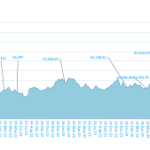According to a media report, the National Assembly of Vietnam has approved a supplemental estimate of 44 trillion dongs, or roughly 1.7 billion dollars, to be used for compensating state employees who are let go in order to reduce the size of the public sector.
Vietnam intends to repurpose the money for free education and other priority sectors while cutting a fifth of the public sector workforce across all governmental levels.
On May 17, Vietnam’s Touitre newspaper reported that 436 of 438 deputies had voted in favor of the measure.
Policies and benefits for officials, civil servants, public employees, and workers impacted by state agency restructuring are provided by the supplemental fund.
After rising salaries last year, Vietnam intends to cut the public sector by 20%.
Vietnam trimmed its cabinet-level organizations, the Government Office, the Government Inspectorate, and the State Bank of Vietnam, to 14 ministries in March, bringing the total down to 17.
The number of deputy ministers is seven.
Vietnam has a relatively thrifty government with modest tax rates.
In Vietnam, value-added tax is 10% and corporate tax is 20%.
However, after defaulting with salaries exceeding 80% of tax revenues, Sri Lanka is now implementing a revenue-based fiscal consolidation strategy that involves taxing both the public and productive sectors and growing the public sector with new employment.
Since 2015, government spending has increased from about 17% of GDP to about 20% after spending-based consolidation, or cost-cutting, was dropped under an IMF program.
Targeting potential output caused two consecutive stabilization crises, which contributed to some of the epensves.





